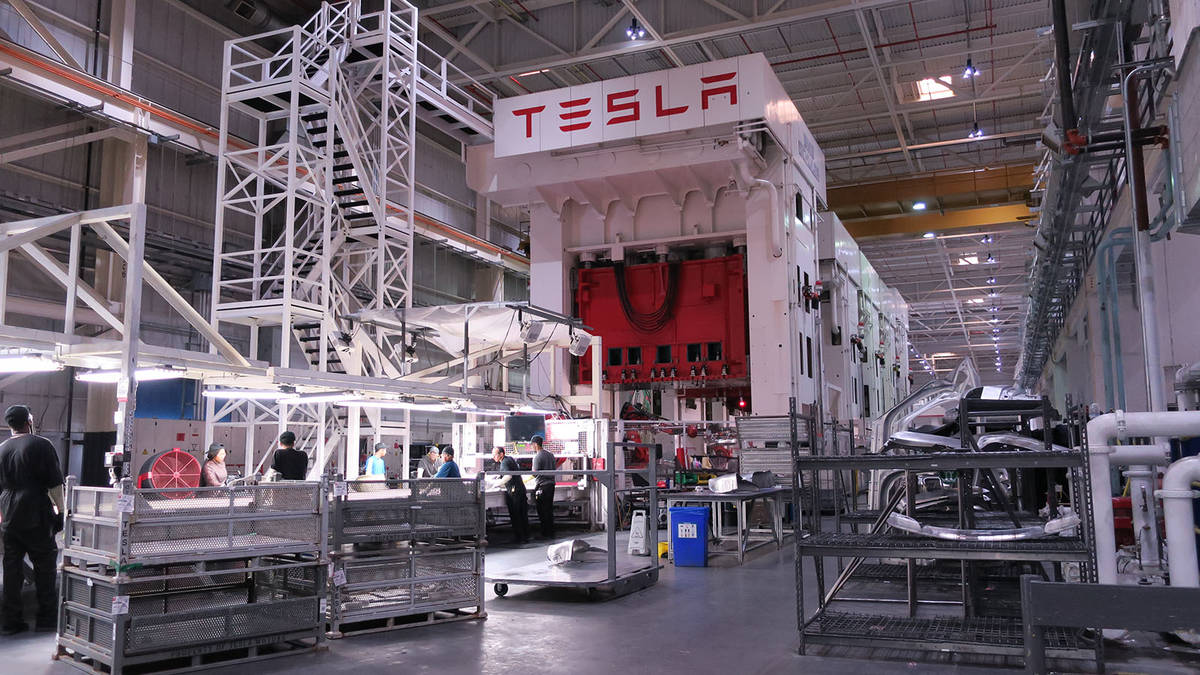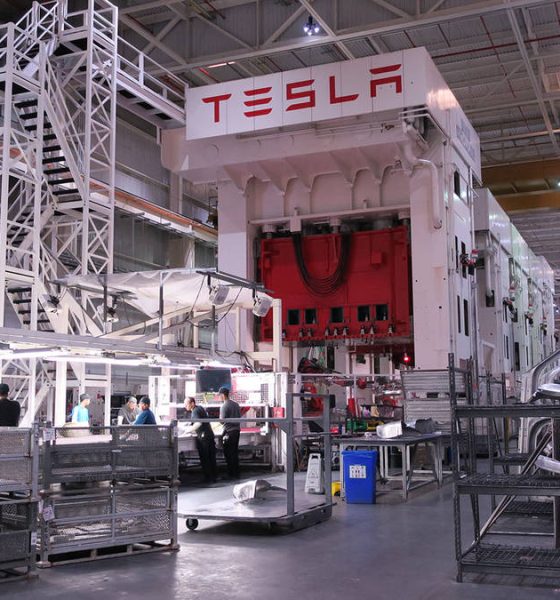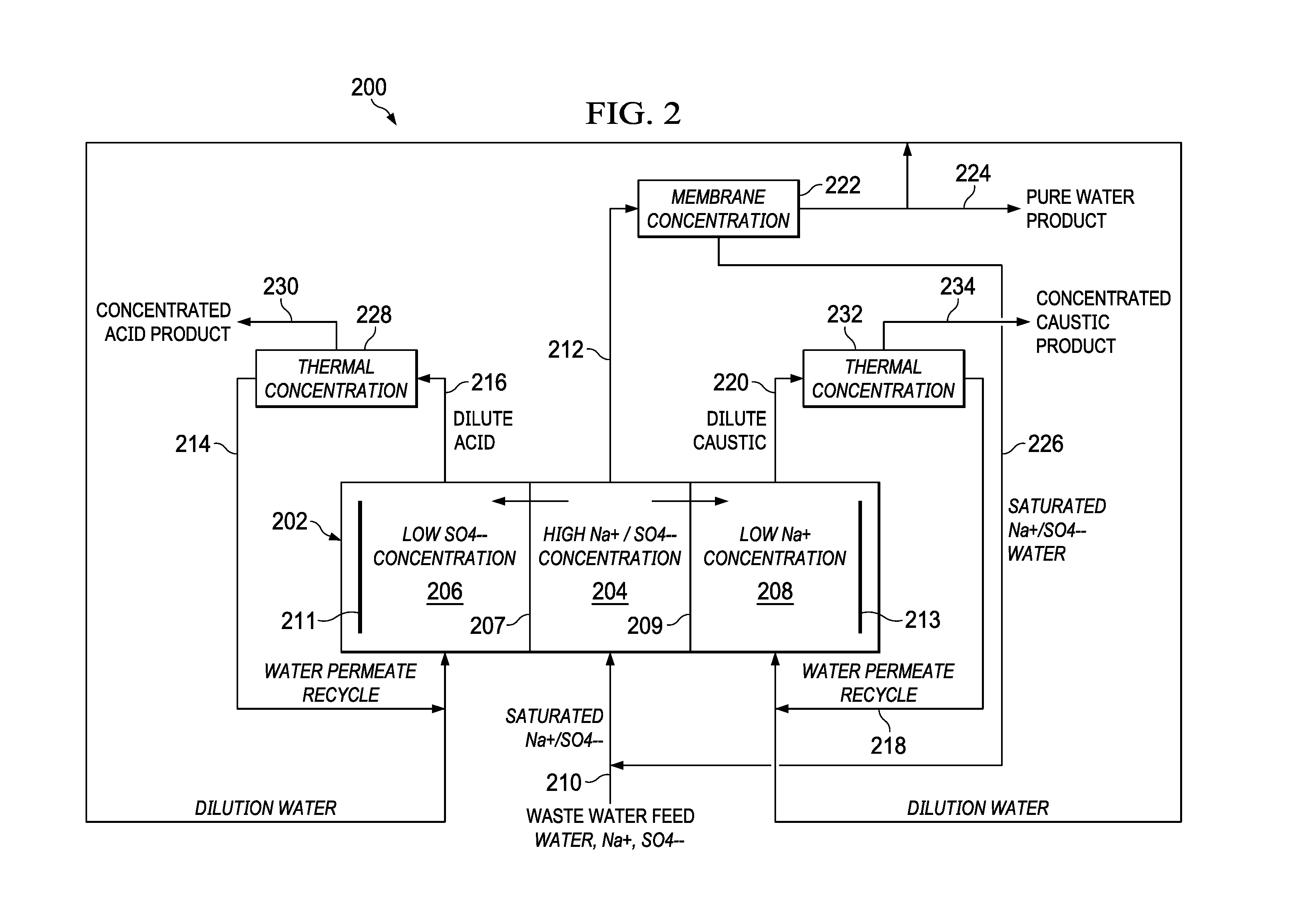

News
Tesla targets lower operating costs through new waste water treatment system patent
Tesla is arguably one of the most dynamic companies in the industry today, with its tendency to constantly innovate even after it reaches its ambitious targets. This particular culture was mentioned by Tesla’s President of Automotive Jerome Guillen in a recent interview with CNBC, when he stated that Tesla’s work, specifically in its batteries, continue to evolve over time. Elon Musk echoed this tendency on Twitter, stating that even Tesla’s vehicles like the Model S and X are partially upgraded every month “as soon as a new subsystem is ready for production.”
Such a culture is emblematic of Tesla. Such a culture is also reflected in a recently published patent for the company, which outlines a clever waste water treatment system that could pave the way for more cost savings in operational expenses. The patent is titled System for Regenerating Sodium Hydroxide and Sulfuric Acid from Waste Water Stream Containing Sodium and Sulfate Ions and was published on November 15.
Tesla notes in its patent description that “acid leaching performed through the addition of sulfuric acid and neutralization through the addition of sodium hydroxide” are common processes used in manufacturing. As a result of these processes, waste water containing high concentrations of sodium and sulfate ions produced, since sodium and sulfate ions are very soluble and are difficult to remove through conventional precipitation processes. Tesla notes that these factors could result in large quantities of waste water being disposed — a process that is both expensive and harmful for the environment.
In a conventional waste water treatment setup, three chambers separated by an anion exchange membrane (AEM) and a cation exchange membrane (CEM), as well as anodes and cathodes, are utilized. Tesla notes that the present system for waste water treatment leaves much to be desired, considering that the setup is not cost-effective at all.

“With the prior art system, not all of the sodium and sulfate ions are able to be removed from the waste water feed stream to produce the ‘treated’ water. This reduces recovery of acid/caustic, and also presents challenges when trying to reuse the “treated” water. This process becomes increasingly difficult as the concentration of ions in the waste water feed stream lowers as it moves through the electrolysis treatment system, and an increasing amount of electrical voltage needs to be applied.
“Further, the generated acid/caustic products can only be produced at low concentrations. As the product streams increase in concentration, an increasing amount of electrical voltage is needed between the anode and the cathode. Further, as the membranes AEM and CEM are in contact with these higher concentration acid/caustic products, the lifetime of the membranes and decreases. The combination of a high electrical load, low recovery efficiency, low recovered acid/caustic concentrations, and short component lifetimes make the prior art system economically unviable.”
Tesla’s waste water treatment system utilizes membrane concentration systems as a cornerstone to develop a system where waste water is treated and possibly even reused. The electric car maker describes its system in the following description.
“As compared to prior waste water treatment systems, the waste water treatment system of the present disclosure uses the three dedicated membrane concentration systems to maintain high ion concentrations in the feed and low ion concentrations in the product chambers. The first thermal concentration system takes in the dilute acid produced by the electrolysis treatment system that allows pure water to permeate while the dissolved acid species are rejected. The pure water is recycled back to the second chamber of the electrolysis treatment system to dilute this stream, while the reject concentrated acid is extracted as a product.
“The second thermal concentration system takes in the dilute caustic produced by the electrolysis treatment system and allows pure water to permeate while the dissolved caustic species are rejected. The pure water is recycled back to the third chamber of the electrolysis treatment system to dilute this stream, while the reject concentrated caustic is extracted as a product. The membrane concentration system takes in the existing waste water that still contains significant dissolved sodium and sulfate. Pure water is extracted as a product, and the concentrate reject is sent back to the electrolysis treatment system waste water feed to maintain a high concentration of sodium and sulfate ions in the waste water feed.”
With such a system in place, Tesla expects to see optimizations in its operations. The Silicon Valley-based carmaker noted in its patent that its waste water treatment system would likely even extend the lifetime of components such as the AEM and CEM, resulting in more cost savings.
“The waste water treatment system of the present disclosure has significant operational advantages, including resulting in large positive driving concentration gradient assisting electric voltage, as opposed to negative gradient resisting electric voltage in (a) conventional system, dramatically reducing electrical load. The waste water treatment system allows for the AEM and CEM of the electrolysis treatment system to be in contact with low concentration acid/caustic, significantly increasing their lifetimes.
“Further, the produced acid/caustic from the membrane concentration systems are at much higher concentrations than the electrolysis treatment system could make on its own, increasing their value. Moreover, the exiting pure water product is Reverse Osmosis (RO) quality and can be directly used to service pure water needs. The recovery of both sodium and sulfate ions is near 100%, since there are almost no remaining ions in the exiting pure water product.”
Over the past months, published patents from the company show that Tesla is looking to optimize several aspects of its operations. Included among these is a rigid structural cable that could open the gates for more automation, a flexible clamping assembly that would allow the company to easily address panel gaps, as well as a DCM recovery system that could make battery manufacturing safer.
Tesla’s recently published patent for its novel waste water treatment system could be accessed in full here.

Elon Musk
Elon Musk and Tesla AI Director share insights after empty driver seat Robotaxi rides
The executives’ unoccupied tests hint at the rapid progress of Tesla’s unsupervised Robotaxi efforts.

Tesla CEO Elon Musk and AI Director Ashok Elluswamy celebrated Christmas Eve by sharing personal experiences with Robotaxi vehicles that had no safety monitor or occupant in the driver’s seat. Musk described the system’s “perfect driving” around Austin, while Elluswamy posted video from the back seat, calling it “an amazing experience.”
The executives’ unoccupied tests hint at the rapid progress of Tesla’s unsupervised Robotaxi efforts.
Elon and Ashok’s firsthand Robotaxi insights
Prior to Musk and the Tesla AI Director’s posts, sightings of unmanned Teslas navigating public roads were widely shared on social media. One such vehicle was spotted in Austin, Texas, which Elon Musk acknowleged by stating that “Testing is underway with no occupants in the car.”
Based on his Christmas Eve post, Musk seemed to have tested an unmanned Tesla himself. “A Tesla with no safety monitor in the car and me sitting in the passenger seat took me all around Austin on Sunday with perfect driving,” Musk wrote in his post.
Elluswamy responded with a 2-minute video showing himself in the rear of an unmanned Tesla. The video featured the vehicle’s empty front seats, as well as its smooth handling through real-world traffic. He captioned his video with the words, “It’s an amazing experience!”
Towards Unsupervised operations
During an xAI Hackathon earlier this month, Elon Musk mentioned that Tesla owed be removing Safety Monitors from its Robotaxis in Austin in just three weeks. “Unsupervised is pretty much solved at this point. So there will be Tesla Robotaxis operating in Austin with no one in them. Not even anyone in the passenger seat in about three weeks,” he said. Musk echoed similar estimates at the 2025 Annual Shareholder Meeting and the Q3 2025 earnings call.
Considering the insights that were posted Musk and Elluswamy, it does appear that Tesla is working hard towards operating its Robotaxis with no safety monitors. This is quite impressive considering that the service was launched just earlier this year.
Elon Musk
Starlink passes 9 million active customers just weeks after hitting 8 million
The milestone highlights the accelerating growth of Starlink, which has now been adding over 20,000 new users per day.

SpaceX’s Starlink satellite internet service has continued its rapid global expansion, surpassing 9 million active customers just weeks after crossing the 8 million mark.
The milestone highlights the accelerating growth of Starlink, which has now been adding over 20,000 new users per day.
9 million customers
In a post on X, SpaceX stated that Starlink now serves over 9 million active users across 155 countries, territories, and markets. The company reached 8 million customers in early November, meaning it added roughly 1 million subscribers in under seven weeks, or about 21,275 new users on average per day.
“Starlink is connecting more than 9M active customers with high-speed internet across 155 countries, territories, and many other markets,” Starlink wrote in a post on its official X account. SpaceX President Gwynne Shotwell also celebrated the milestone on X. “A huge thank you to all of our customers and congrats to the Starlink team for such an incredible product,” she wrote.
That growth rate reflects both rising demand for broadband in underserved regions and Starlink’s expanding satellite constellation, which now includes more than 9,000 low-Earth-orbit satellites designed to deliver high-speed, low-latency internet worldwide.
Starlink’s momentum
Starlink’s momentum has been building up. SpaceX reported 4.6 million Starlink customers in December 2024, followed by 7 million by August 2025, and 8 million customers in November. Independent data also suggests Starlink usage is rising sharply, with Cloudflare reporting that global web traffic from Starlink users more than doubled in 2025, as noted in an Insider report.
Starlink’s momentum is increasingly tied to SpaceX’s broader financial outlook. Elon Musk has said the satellite network is “by far” the company’s largest revenue driver, and reports suggest SpaceX may be positioning itself for an initial public offering as soon as next year, with valuations estimated as high as $1.5 trillion. Musk has also suggested in the past that Starlink could have its own IPO in the future.
News
NVIDIA Director of Robotics: Tesla FSD v14 is the first AI to pass the “Physical Turing Test”
After testing FSD v14, Fan stated that his experience with FSD felt magical at first, but it soon started to feel like a routine.

NVIDIA Director of Robotics Jim Fan has praised Tesla’s Full Self-Driving (Supervised) v14 as the first AI to pass what he described as a “Physical Turing Test.”
After testing FSD v14, Fan stated that his experience with FSD felt magical at first, but it soon started to feel like a routine. And just like smartphones today, removing it now would “actively hurt.”
Jim Fan’s hands-on FSD v14 impressions
Fan, a leading researcher in embodied AI who is currently solving Physical AI at NVIDIA and spearheading the company’s Project GR00T initiative, noted that he actually was late to the Tesla game. He was, however, one of the first to try out FSD v14.
“I was very late to own a Tesla but among the earliest to try out FSD v14. It’s perhaps the first time I experience an AI that passes the Physical Turing Test: after a long day at work, you press a button, lay back, and couldn’t tell if a neural net or a human drove you home,” Fan wrote in a post on X.
Fan added: “Despite knowing exactly how robot learning works, I still find it magical watching the steering wheel turn by itself. First it feels surreal, next it becomes routine. Then, like the smartphone, taking it away actively hurts. This is how humanity gets rewired and glued to god-like technologies.”
The Physical Turing Test
The original Turing Test was conceived by Alan Turing in 1950, and it was aimed at determining if a machine could exhibit behavior that is equivalent to or indistinguishable from a human. By focusing on text-based conversations, the original Turing Test set a high bar for natural language processing and machine learning.
This test has been passed by today’s large language models. However, the capability to converse in a humanlike manner is a completely different challenge from performing real-world problem-solving or physical interactions. Thus, Fan introduced the Physical Turing Test, which challenges AI systems to demonstrate intelligence through physical actions.
Based on Fan’s comments, Tesla has demonstrated these intelligent physical actions with FSD v14. Elon Musk agreed with the NVIDIA executive, stating in a post on X that with FSD v14, “you can sense the sentience maturing.” Musk also praised Tesla AI, calling it the best “real-world AI” today.








